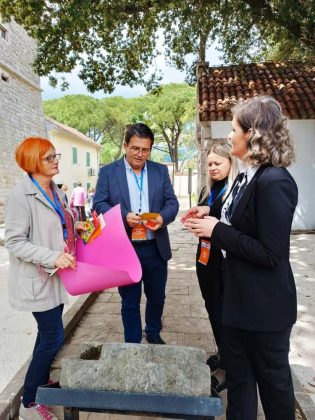
Representing HAEMUS, Ms. Vasilka Dimitrovska recently contributed to the prestigious international conference “Meet, See, Do” 2024, held on April 18th-19th, 2024. This event, organized by the Balkan Museum Network with the generous support of the Museum and Gallery Tivat and the municipality of Tivat in Montenegro, provided a platform for professionals to engage deeply with heritage issues. Ms. Dimitrovska led an insightful interpretative workshop tailored specifically for heritage professionals, offering valuable perspectives and fostering enriching discussions. For more insights into the conference activities, please explore the provided link, while in this narrative, we spotlight Ms. Dimitrovska’s impactful workshop.

Titled “Engaging children and youth with storytelling and heritage gamified activities,” the workshop took place on April 18, 2024, at the Museum and Gallery Tivat, with 20 participants from the Balkans in attendance. The session, moderated by Milena Milošević Mičić from the Museum in Knjaževac, unfolded in two parts. Initially, Ms. Dimitrovska delivered an extensive presentation incorporating numerous personal examples of heritage interpretation, seamlessly integrating innovative interactive gamified elements specifically designed to engage children and young people. This primarily comprised activities from HAEMUS’s educational program titled “Young Explorer,” along with various examples from Storytelling Skopje, her personal educational initiative in heritage interpretation.
The aim was to highlight the effectiveness of incorporating gaming elements into educational activities, which, when combined with interpretive models and storytelling, create engaging and exceptional experiences. These approaches make learning more accessible to children and young people, while the shared heritage information through such interactive methods remains memorable for extended periods.
For the second part of the workshop, she specifically designed an interpretive exercise where experts, divided into groups, were tasked with creating a game within the space that encompassed all aspects of gamification and storytelling, but with the application of interpretive tools. Considering the feedback received during and after the workshop, we firmly believe the session was successful and stimulated a new way of thinking among heritage professionals for a more dynamic approach when working with children and young people.



















